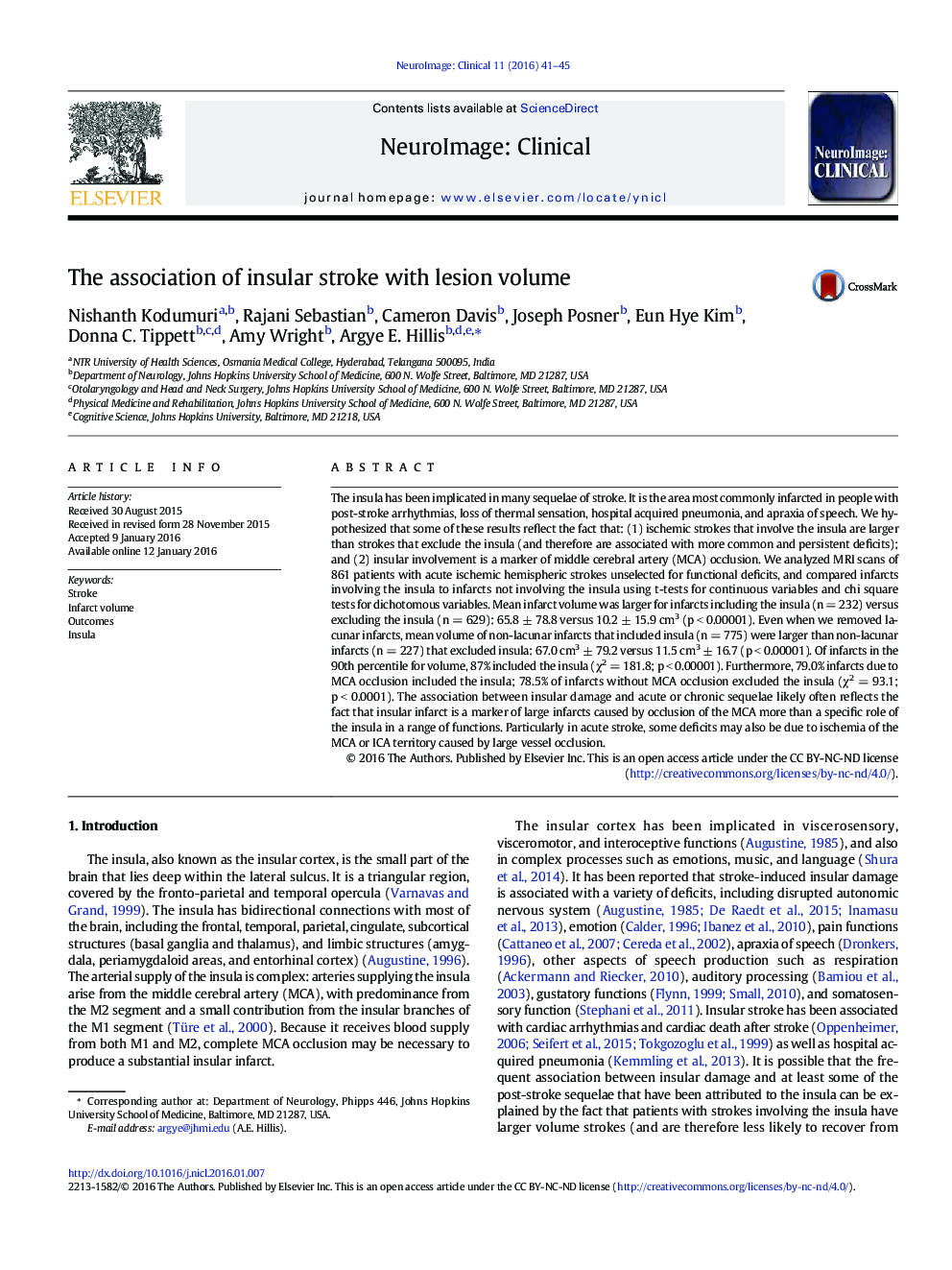| Article ID | Journal | Published Year | Pages | File Type |
|---|---|---|---|---|
| 3074894 | NeuroImage: Clinical | 2016 | 5 Pages |
•The insula is the most commonly infarcted area in patients with a wide range of deficits.•In 861 acute ischemic hemispheric strokes, mean infarct volume was much larger when infarct included the insula (p < 0.00001).•Of infarcts in the 90th percentile for volume, 87% included the insula (χ2 = 181.8; p < 0.00001).•Nearly 80% of infarcts due to MCA occlusion included the insula•Identified associations between insular infarct and deficits should control for lesion volume.
The insula has been implicated in many sequelae of stroke. It is the area most commonly infarcted in people with post-stroke arrhythmias, loss of thermal sensation, hospital acquired pneumonia, and apraxia of speech. We hypothesized that some of these results reflect the fact that: (1) ischemic strokes that involve the insula are larger than strokes that exclude the insula (and therefore are associated with more common and persistent deficits); and (2) insular involvement is a marker of middle cerebral artery (MCA) occlusion. We analyzed MRI scans of 861 patients with acute ischemic hemispheric strokes unselected for functional deficits, and compared infarcts involving the insula to infarcts not involving the insula using t-tests for continuous variables and chi square tests for dichotomous variables. Mean infarct volume was larger for infarcts including the insula (n = 232) versus excluding the insula (n = 629): 65.8 ± 78.8 versus 10.2 ± 15.9 cm3 (p < 0.00001). Even when we removed lacunar infarcts, mean volume of non-lacunar infarcts that included insula (n = 775) were larger than non-lacunar infarcts (n = 227) that excluded insula: 67.0 cm3 ± 79.2 versus 11.5 cm3 ± 16.7 (p < 0.00001). Of infarcts in the 90th percentile for volume, 87% included the insula (χ2 = 181.8; p < 0.00001). Furthermore, 79.0% infarcts due to MCA occlusion included the insula; 78.5% of infarcts without MCA occlusion excluded the insula (χ2 = 93.1; p < 0.0001). The association between insular damage and acute or chronic sequelae likely often reflects the fact that insular infarct is a marker of large infarcts caused by occlusion of the MCA more than a specific role of the insula in a range of functions. Particularly in acute stroke, some deficits may also be due to ischemia of the MCA or ICA territory caused by large vessel occlusion.
